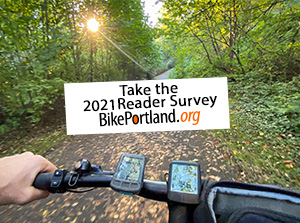Cycling News & Blog Articles
Oregon Walks releases landmark report on fatal pedestrian crashes
A landmark report released today by Portland nonprofit Oregon Walks offers the most thorough examination of fatal pedestrian crashes we’ve ever seen.
The report (which we alluded to back in November) gives us not only a detailed analysis of each crash, but a host of important and well-informed recommendations on how to prevent them.
A team of volunteers led by local lawyer Scott Kocher of Forum Law Group (who’s also an Oregon Walks board member) split the report into three parts: Painstaking reconstructions of 48 fatal pedestrian crashes from 2017 to 2019; a higher-level “facts and figures” overview; and an analysis of nine “focus issues” and recommendations.
What was found in these reports won’t come as a huge shock to regular BikePortland readers, but the scope and detail of the report — along with its findings — are a vital tool for activists and should be seen as yet another red flag that Portland-area transportation agencies are not doing nearly enough to stem the tragic tide of deaths to vulnerable road users. The takeaways also underscore the fact that underserved people in our community are most at risk.
Advertisement



 (Selected charts from the report.)
(Selected charts from the report.)
“Transportation planning cannot be successful in the absence of examining, understanding, and addressing systems of oppression as those most impacted by the policies that allow traffic fatalities to happen are those who are marginalized,” reads a summary of the report. “Policymakers, transportation agencies and community members alike must not only recognize the symptoms of infrastructure inadequacies, but acknowledge that the root cause of traffic crashes and pedestrian fatalities are highly influenced by systemic racism, poverty, inequality, systems of oppression, public policy, and unequal distribution of government resources.”
The report was given cover-story treatment in this week’s issue of the Pulitzer Prize-winning Willamette Week. Here’s an excerpt from the lead story:
“The records reveal an alarming, sometimes counterintuitive picture of a wildly inequitable system. The geographic and racial disparities are fed by three structural problems: The streets in East Portland are too wide, streetlights are inadequate and, most importantly, drivers go too fast.
… The 54 traffic deaths on Portland streets last year are the highest since 1996.
Dana Dickman, PBOT’s traffic safety section manager and Vision Zero lead, says people need to be patient. “In Vision Zero cities where they’ve gotten down to one or two deaths a year,” she says, “it’s taken a generation of investment.”
But Scott Kocher, an Oregon Walks board member who pulled together the group’s research, says Vision Zero is underachieving because PBOT is too cautious.
He says the agency fears conflict and has not aggressively sought to lower speed limits on more dangerous roads or deployed traffic-calming devices and new lighting that would make streets safer.”
And here are what the report authors say are key findings:
• Those living in the underserved area of East Portland are disproportionately affected by fatal pedestrian crashes with all crashes occurring in areas where the median income is below the city average.
• People who identify as Black, who are experiencing homelessness, who are Older Adults or who are Persons with Disabilities are all at a disproportionately high risk of being killed in collisions.
• Street lighting was found to be an urgent issue with 79% of crashes occurring in the dark with potential lighting inadequacies identified at a majority of these locations. Further engineering review is needed.
• A lack of traffic calming and speeds set above the statutory limit were a factor at a majority of fatal pedestrian crash locations.
• A majority of fatal pedestrian crashes occurred on roads that are designated by the Portland Bureau of Transportation (PBOT) as “High Crash Corridors.”
We’ll be leaning on the findings from this report for years and plan follow-ups in the coming days and weeks.
Learn more and check out the interactive crash map at OregonWalks.org/fatal-pedestrian-crash-report.
— Jonathan Maus: (503) 706-8804, @jonathan_maus on Twitter and This email address is being protected from spambots. You need JavaScript enabled to view it.
— Get our headlines delivered to your inbox.
— Support this independent community media outlet with a one-time contribution or monthly subscription.



